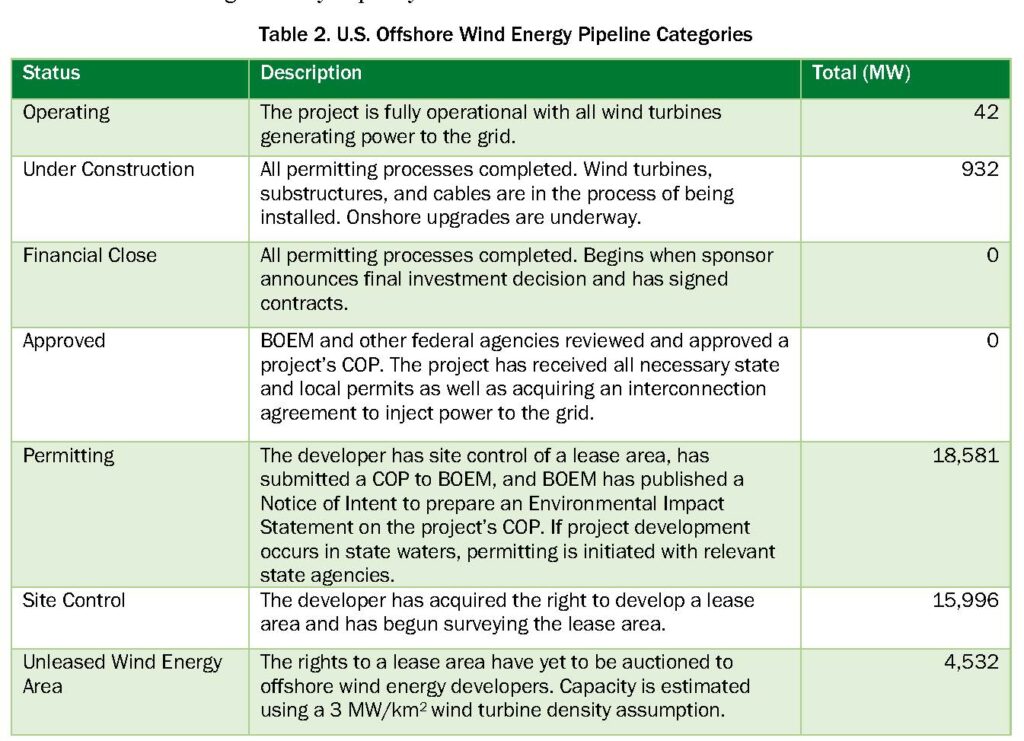The Department of Energy’s (DOE) Office of Energy Efficiency & Renewable Energy (EERE) wrote and posted the 2022 Offshore Wind Market Report,* which contains an astounding table that in turn points to the way permitting—not research and development or manufacturing—is the big barrier to wind energy right now; although many of us assume that better batteries, and more fundamental research, are the main constraints for large-scale wind power deployment, it would appear that, no, permitting is actually the biggest barrier, which is blocking at least 442 times as much wind power as is presently operating:

So: 42 megawatts (MW) are operating, 932 MW are under construction, and 18,581 are stuck in permitting processes—many of those permitting processes likely relating to the National Environmental Protection Act (NEPA), which is supposed to “protect” the environment, but has instead been used as a cudgel to continue the status quo and prevent substantial changes in power and transportation policy. “The status quo” in terms of power production in the United States is pretty bad, and high in terms of methane and carbon emissions. Beyond the 18,581 MW in permitting purgatory, another 15,996 MW are in the “site control” phase of wind projects.
Before seeing this report, I knew that NEPA (and CEQA in CA), along with parochial local political issues, were stopping wind power from being developed, but I didn’t realize the extent to which permitting was blocking wind projects. At Seliger + Associates, we’ve got some personal and business interests in seeing renewable energy projects succeed, because we’ve written many proposals for organizations and companies that are working on renewable energy projects. Consequently, and above and beyond the obvious need for renewable energy, we don’t like to see our work wasted: the United States can do a tremendous amount of R & D, but if the fruits of the R & D can’t be deployed, the R & D is in effect wasted.
Currently, it’s already technically feasible to install large amounts of offshore wind power generating capacity: we’re just not doing it. And the EERE has, as of this writing, a Funding Opportunity Announcement on the street for “The Systems Integration Solar and Wind Grid Services and Reliability Demonstration FOA.” That FOA obviously isn’t for the direct creation of new solar technologies, but it’s an indication of the importance of wind-related, grant-funded projects. Total U.S. power generating capacity is vast—one source reports “1.2 million megawatts of generation capacity” in Feb. 2022—so even 18,000 MW is a small proportion. But permitting challenges likely dissuade would-be operators from attempting to install more. The Inflation Reduction Act (IRA), passed earlier this month, is supposed to reform the permitting process, which is a major culprit in U.S. reliance on fossil fuels. The sooner reform hits, the better. Offshore wind minimally affects birds, so it’s one of the easiest climate- and power-related wins available to us, and much of the U.S. population is clustered along the coasts.
* The link goes to a PDF download.
